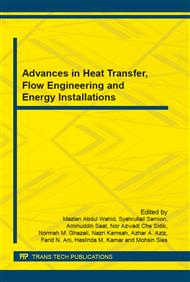p.459
p.469
p.474
p.479
p.484
p.489
p.495
p.499
p.507
The Use of Tertiary-Butyl-Hydroquinone (TBHQ) in Minimizing Oxidation Effects on Palm Oil Based Lubricant Using Four Ball Tribotester
Abstract:
The extended uses of mineral oil based lubricant have continuously troubling the global environment issues. The remaining mineral oil resources also being the most debated issues in renewable energy conferences. Vegetable oils are still offering the highest possibility in replacing the mineral oil resources. This research is concerning on how to eliminate one of the disabilities found in palm oil based lubricant which is oxidation. Palm oil possessed unsaturated double bond in which susceptible to oxidation process. The simplest approach is to blend the palm oil based with anti – oxidant agent homogenously. This research was conducted using double fractionated palm oil (SPL) as lubricant and Tertiary-Butyl-Hydroquinone (TBHQ) as anti – oxidant agent to determine the tribology behavior including the coefficient of friction, wear scar diameter and the surface roughness profile. The experiment was also conducted using four-ball tribotester by following ASTM D4172B standard. Superior Mineral Engine Oil (EO) was used as comparison. The results found that SPL+TBHQ was able to reduce the coefficient of friction and provided lower surface roughness value. However it was unable to minimize the mean wear scar diameter compared to EO. The physical appearances of wear worn are also being observed in this research.
Info:
Periodical:
Pages:
484-488
Citation:
Online since:
January 2016
Authors:
Price:
Сopyright:
© 2016 Trans Tech Publications Ltd. All Rights Reserved
Share:
Citation:


